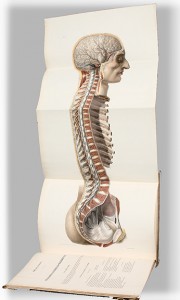How can adjacent segment disease impact a workers’ compensation claim?
Adjacent segment disease has become a common topic in spine surgery circles because of the significant increase in fusion surgery in recent years. However, in spite of achieving successful fusion in spinal surgery, a long-term follow-up after a solid fusion has revealed degenerative changes including segmental instability, spinal stenosis, intervertebral disc lesion, retro-spondylolisthesis, and fracture at the adjacent segments.
Adjacent segment disease (ASDis) is defined as new degenerative changes at a spinal level or levels in the spine, accompanied by related symptoms (radiculopathy, myelopathy, or instability). Adjacent segment degeneration (ASDeg) represents the radiographic changes without the symptomatology.
The debate at the core of ASDeg and ASDis is whether these conditions represent the natural history of age-related degeneration or are a result of the biomechanical changes induced by surgical fusion and may be viewed as a consequential condition. Medical experts disagree on the answer to this question.
A consequential condition is a condition that is caused as an indirect result of a primary work injury. For example, a worker who sustains a back injury may subsequently develop depression as a result of unremitting pain or disability. For another, a worker with a leg injury may favor the injured leg to such an extent that they develop an injury to the opposite leg. In each case, the second condition is a compensable consequence of the work injury even though the work injury itself played no direct role in causing it.
Litigation concerning consequential condition claims is a perplexing and difficult area to navigate, even for lawyers, because it often involves a dispute of medicine as well as the law. As much as we have advanced in medicine, certain areas of medical science remain unsettled. Medical experts frequently disagree with each other. Legally, there may be an issue concerning responsibility among multiple employers. Moreover, recent case law may impact the legal standard for determining compensability of a consequential condition.
Some experts say there is a lack of high-level clinical data regarding adjacent segment disease. In 1999, Alan S. Hilibrand, M.D. and colleagues published an often-referenced study[1] in which they documented incidence and prevalence of ASDis in 374 consecutive patients who underwent a total of ACDF (anterior cervical discectomy and fusion) to manage cervical spondylosis with radiculopathy and/or myelopathy.
Experts often attribute the lack of high-quality data to the following factors:
- Limited number of clinical studies and patient participation
- Most studies focus on the cervical spine and not the lumbar spine
- Heterogeneity of surgical methods in regards to level operated on, plating, grafting material, and cage type
- Variation in the radiographic modalities used to assess ASDeg
Under Oregon law, such consequential conditions are not compensable unless the compensable injury is the major contributing cause of the consequential condition.[2] When a consequential condition is claimed under an adjacent segment disease theory, the question is whether the compensable injury would amount to the level of the major contributing cause of the claimed condition.
A compensable consequential condition such as stenosis, spondylosis (osteoarthritis), and foraminal narrow under an adjacent segment disease theory can increased claim exposure exponentially, even when the claim is in Own Motion status. Such consequential condition may result in additional fusion surgeries, which may start the vicious cycle anew. The recent Court of Appeals case Brown v. SAIF may be interpreted to broaden the compensability standard for consequential condition claims.
__________________________
[1] Hilibrand, Alan S., MD, et al. “Radiculopathy and myelopathy at segments adjacent to the site of a previous anterior cervical arthrodesis.” J Bone Joint Surg Am, 1999 Apr;81(4):519-28. (Abstract: //www.ncbi.nlm.nih.gov/pubmed/10225797)
[2] ORS 656.005(7)(a)
